Social Practice – Social Poetry – Social Poiesis: aesthetic experimentalism and the creation of public life
[mise en scène]
Multiple lines of inquiry – to enact a series of expansions from art to aesthetics and thus art education to aesthetic education. This would then entail using a synthesis of John Dewey’s theory of experience and experimentalism. The model of “experiment” would be the iterative approach of design rather than the narrower scientific model of experimentation. Ideas, actions, and other modes then become experiments in public culture. I re-frame social practice (with its narrow art focus) as social poiesis, and try to tackle the relationship between this aesthetic practice and the practice of democracy – again largely via Dewey, subsequent scholars, and especially Jane Addams. I would argue that Hull House was an exemplar of this aesthetic, experiential, experimental notion of social poiesis (Addams spoke of social ethics).
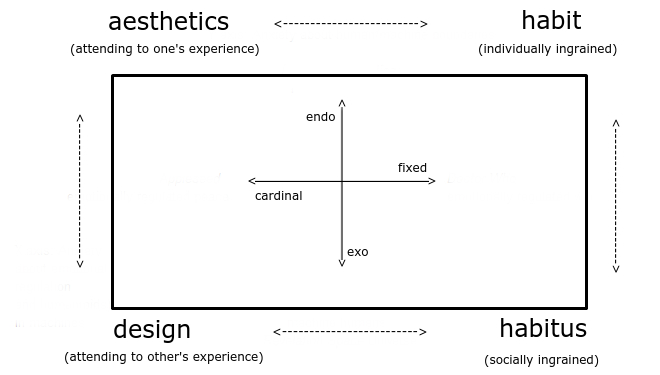
[scene 1]
Granted, we are in the midst of an epistemic crisis, however, academics of a certain persuasion share a large measure of blame. The arts could have embraced the humanistic qualities for which they are so well suited, instead they sought respectability within the regime of criticality. Artists were to become political theorists and philosophers, usually quite shoddy ones. The sharp knife of reason and analysis gave modest protection to the fledgling artist, but the world grew darker and more dangerous. Everywhere critique multiplied, while empathy and visionary spirit weakened. “Without a cadre of people with these sort of imaginative and emotional capacities, there is no hope for democracy.”
[scene 2]
The proceduralism and planning of liberalism relied too heavily on institutions, rather than embodied habits of the heart. Liberals became enamored with rules, deliberation, and rights rather than virtues, associated living, and responsibilities. A polity of discourse among individuals, rather than of meaning within communities.
[scene 3 – courtesy of Mary Midgley]
We need the vast world, and it must be a world that does not need us; a world constantly capable of surprising us, a world we did not program, since only such a world is the proper object of wonder. Any kind of Humanism which deprives us of this, which insists on treating the universe as a mere projection screen for showing off human capacities, cripples and curtails humanity. “Humanists” often do this, because where there is wonder they think they smell religion, and they move hastily in to crush that unclean thing. ***But things much more unclean than traditional religion will follow the death of wonder.***
[scene 4]
Liberalism’s obsession with institutionalizing, economizing, and professionalizing every sphere of human endeavor leaves us out of love’s reach. We need human scale, affectionate practices that generate enchantment, and numinous experience.The liberal project is a dead end – Entzauberung.
Ronald Osborn (quoting Wendell Berry):
“Our politics and science have never mastered the fact that people need more than to **understand** their obligation to one another and the earth; they need also the **feeling** of such obligation, and the feeling can come only within the patterns of familiarity.”
The affection and skill necessary to prevent the depletion of top-soil, for example, only arises through intimate knowledge of and devotion to a concrete locality and its supporting natural and human relationships. There simply are no technical or global solutions to the crisis of soil loss brought on by extractive chemical and machine-based farming methods. What are needed are cultural solutions that take diverse local forms and emerge as a deeply rooted and affectionate responsiveness to place.
“When one works beyond the reach of one’s love for
the place one is working in and for the things and creatures one
is working with and among, then destruction inevitably results,”
Berry writes. “An adequate local culture, among other things,
keeps work within the reach of love.”

[scene 5]
The wizards of explicit knowledge subvert the power of implicit experience. The artist as comedian then is forced to explain the joke, robbing it of all force. Art enters the pornographic regime of criticality, or performs the ventriloquism of critique in which art becomes the otherwise mute mannequin delivering the punchlines for its omnipotent master.
[interlude]
Social practice, to the extent it defines itself as another term for socially engaged art, repeats the mistakes of procedure and institution driven liberal democracy. Rather than approaching public life with an open question as to the best means for achieving one’s ends, social practice forecloses the choice to (an admittedly expansive definition of) art. Social practice, in the end, really means social practice art and with that casts its lot with a set of histories, institutions, and preconceived roles that limit its scope. It mimics the idea of democracy as a political system with readily identifiable structures, instead of democracy as an experimental, experiential ethos.
A fundamental problem of democracy is the negotiation of associated living, of social life. This is an aesthetic problem, not a cognitive problem. Thus it would appear that art is of particular advantage in addressing this problem. However, art is but a small subset of aesthetic experience. Gregory Pappas says of democracy, “It would be more accurate to say that a democratic society is one that is composed of democratic associations than to say that a democratic association is one that exists because of a democratic society.” Similarly, it would be more accurate to say that art is predicated on aesthetic experience than to say aesthetic experience exists because of art.
The proposal then, is to shift to social poiesis as the mode of inquiry. I described it previously:
“social poiesis” (despite its even more obscure quality) might be a better term. If we don’t limit ourselves to art, social poiesis (née practice) could be more dynamic and encompass not only art actions and art environments, but also – urban planning, sports leagues, communes, be-ins, residencies, raves, state fairs, theme parks, cults, encounter groups, chautauquas, even nations…and would also apply to a much broader demographic of participants rather than artists and their audiences…
Michael Atkinson does not preface poiesis with social, however describes it as a “public method,” which I find resonant:
Poiesis is an artistic, aesthetic, emotional, and public method of revealing “different” human truths…humanistic, moral, ethical, spiritual…Poiesis arises from an act, a symbol, a thought, a feeling, or an expression that brings forth knowledge of the human condition falling outside of rationally technological ways of understanding human essences. Those interested in poiesis are less concerned then with measuring and accounting for something quantifiable in the world than the possibility of simultaneously experiencing the material and nonmaterial parameters of human existence.
As with Atkinson, this reading of poiesis from Robert D. Stolorow (via a review of a book by Hubert Dreyfus and Sean Dorrance Kelly) gets at the spiritual aspect that seems important:
Dreyfus and Kelly examine and seek to resuscitate a kind of sacred practice, still marginally available to us, that the ancient Greeks called poiesis:
Until about a hundred years ago, the cultivating and nurturing practices of poiesis organized a central way things mattered. The poietic style manifested itself…in the craftsman’s skills for bringing things out at their best.…This cultivating, craftsman-like, poietic understanding of how to bring out meanings at their best was alive and well into the late nineteenth century, but it is under attack in our technological age. (Dreyfus and Kelly, 2011, p. 206)
Using woodworking as their principal example, Dreyfus and Kelly show that poietic understanding is both practical and embodied and that it enables us to see distinctions of meaning and value that those without such poietic understanding cannot see. Poietic practice makes it possible for us to apprehend entities and situations in their uniqueness and is thus a source of care, respect, and even reverence.
Finally there is the dimension of power in social poiesis. Anne Quéma goes into substantial detail in Power and Legitimacy: Law, Culture, and Literature, but her quick summary: “[social poiesis is]…a formidable process of creating meaning and regulating the practices and structures of social reality through symbolic and narrative means.”
A relic unearthed.
Way back in the day Jen Delos Reyes and I (among others), started a journal devoted to social practice. Gone, but not forgotten – the original domain is now a porn site, but you can still find the material here. I even gave it a face lift.
The ascent of the disabling ecosystem of liberalism

Thee square ov capture for design as enlivenment.

A matrix of possibilities for food, leisure, democracy

#soilpractice + #socialpractice coordinates with (mostly) unrelated notes

Facebook comment of mine:
And thus the arts are subjugated to the disastrous apparatus constructed by the Enlightenment cleaving of self/other. One of the most egregious examples of this is the forced submission of all manner of creative play to (linguistic) domination in the form of “criticality,” which is a technique of dissociation that replicates the very mistakes that its proponents seek to solve using it as a tool!
“Criticality” as fertilizer
Initial applications lead to tremendous yields while ultimately degrading the ecological substrate. Everywhere the miraculous results are lauded as revolutionary, liberating us from various “externalities.” Criticality/fertilizer is seen as a cure all – making a degraded condition seem easily rectified while masking the fact that said cure alls are the mode of degraded experience itself. Criticality/fertilizer is supplied by large centralized institutions under the auspices of empowerment, but it really means a lifetime of debt and dependency.
Addendum as manifesto: “All we have to do is look around: toward a local social practice syllabus” Part II
Robert L. Thayer’s LifePlace: Bioregional Thought and Practice should get all the credit (or blame) for this, especially his chapter “Learning” where many of the following quotes and paraphrases are lifted from.
In a a post from several years ago, I lamented the state of social practice education – a placeless, homogeneous, view from nowhere. In short, social practice education is like most so-called education in the United States an empty embrace of the values of abstraction and global capitalism.
In the ensuing years, things have continued to devolve with students mostly being trained to join not a specific community rooted in a specific bioregion, but rather to join a global capitalist network – “the art world.” Ironically, the overwhelming emphasis in graduate art education is the inculcation of a fetish for criticality. Of course, it is a highly selective form of criticality, one that does not turn its gaze on the notion of criticality itself, but more importantly, does not turn its attention to the abstracted space and values of the educational apparatus. Well, it certainly does in terms of a liberal concern for identity politics and student debt, but does not seem to connect the dots to understand how debt is as disembodied as the structure of education – a purely fungible relationship of data points where course credit equals monetary credit…
So universities, banks and art schools continue to act as centripetal forces – pulling resources into vast global flows while the animate earth on which the entire edifice is built, continues to be ignored, or is itself only considered through the lens of a global climate crisis. And despite the congratulatory backslapping of an activist class that brings all of its intellectual and critical faculties to bear on the matter, they are blind to the fact that they have been trained by institutions mired in a fundamental category mistake which they themselves emulate.
To paraphrase David Orr, there are some debilitating myths at play – that ignorance is a solvable problem rather than a fundamental feature of being human; that knowledge (and technology) are, alone, enough to solve problems; that the increase in knowledge (rather than wisdom) is an inherent good; and that the education of students is primarily concerned with knowledge (or in the arts, with learning to be critical consumers of knowledge). But maybe it would be better to quote Orr:
All education is environmental education. By what is included or excluded, students are taught they are part or apart from the natural world. To teach economics [or social practice], for example, without reference to the laws of thermodynamics or ecology is to teach a fundamentally important ecological lesson: that physics and ecology have nothing to do with the economy. It just happens to be dead wrong.
So, in the intellectual parlor games of e-flux and other smarty pants organs of the academic-art-financial nexus we don’t find the cultivation of (via Thayer) spiritual sensitivity, gentleness, caring, compassion, or generosity. Some may bristle at the suggestion of a spiritual role in the crisis we face equating it with some sort of magical thinking, but in the downward spiral of an accelerationist embrace of an intellectual homeopathy, we find a truly absurd form of wizardry. As Orr notes, the earth has been degraded on a massive scale by the educated, by the products of a system of displacement that trains even its supposed avant garde to search for solutions in the very intellectual tools that are the cause of the problem.
An education must be rooted to be radical. As Wes Jackson has said, there is only one serious major on offer at colleges – upward mobility (be it in terms of financial, social, or cultural capital). But as generations leave their homes to become citizens of a discipline rather than citizens of a watershed, or biotic community, fundamental questions are cast aside – “who am I?” and “what should I do?” often remain, but the answer to those end up being distortions in which membership in a professional class becomes the enduring identity – I am an artist. I should make art (build a vitae).
But another question, one that provides an interlocking context for the other two – “where am I?” gets cast aside. In today’s refugee crisis we see the heartbreak of an uprooted people. Academics decry this, all the while being seemingly oblivious to their own displacement, having no home (that truly deserves such a name) of their own. They are adrift in the gig economy, in the cosmopolitan nomadism of academia, replicating “monocultures of the mind” as Vandana Shiva would put it. And like technological approaches to agriculture that apply a specialized, highly trained, expert perspective to solving an urgent issue, we are left with an illusion, not only of mastery, but of plenty. Meanwhile more and more communities are being poisoned or starved. We must abandon the rootless sky, settle upon the earth and build practices of permanence, regeneration, and love – or, you can’t have social practice without soil practice.
Thee eightfold building block ov #soilpractice + #socialpractice (design qualities, methods, goals)

s³ + sae = (#soilpractice + #socialpractice ecologies)

Toward a #soilpractice + #socialpractice manifesto: ending the art system and restoring aesthetic ecology

The art system is like industrial food production focusing on the products that are most readily brought to market. It creates monocultures, vast swaths of easily consumable, but highly infrastructure dependent crops.
Its model of research therefore requires institutional gatekeeping (museums, galleries, expert panels, curators, and especially credentialling – the MFA program, etc.) in order to maintain its economic viability. No seed sharing between neighbors, no advice from your grandmother will suffice. Folk wisdom is for anthropology, but not the arcane science of the fine arts. These institutions and their representatives act like Monsanto taking up vernacular practices, formalizing them, squeezing the living core out, and controlling their distribution and viability.
The study of art then becomes about how to increase yields of proven commodities, and how to effectively market those commodities to convince the public that there is no alternative (T.I.N.A.) to the shitty tomatoes on offer. Actually thriving aesthetic communities that exist outside the system are ignored at best, mocked and degraded at worst.
This degradation of the soil of aesthetic experience is the same folly conventional farming employs. The multi-century wisdom of soil ecology is plowed under and poisoned by the faddish inventions of centralized economic and cultural elites. “We are feeding the world!” they say. “Other methods will lead to starvation.” they say. And yet the hunger is a scarcity they invented by decimating communities and practices and also a hunger for something more substantial than the cleverness of packaging experts, or merchandising, of disconnected, consumerist art products.
So Sholette’s “dark matter,” is a metaphor from astronomy, but maybe we need one from agronomy instead. Rather than “dark matter” as the great missing mass of the art world, it is “mycorrhizae” that is more apropos. Art historians and critics completely miss the vitality and complexity upon which the monocultures they study depend, their eyes trained only to see the field of wheat rather than the diverse ecosystemic relationships on which it depends.
The art system must be destroyed before its toxic practices further degrade the potential quality of our aesthetic ecologies. We are being poisoned. To paraphrase Vandana Shiva, “NO MORE MONOCULTURES OF THE MIND.”
A continuum along which soil practice and social practice occur

From notes today:
the art system has become industrial agriculture
aesthetic ecology as gardening – learn from your grandmother and your neighbor, pick up some magazines or books, watch some YouTube videos and get growing, no gatekeepers, no degrees required
the art system says the only real gardening is done by experts
seed saving (AE) vs. industrial ag research (AS) – person to person innovation (AE) vs. institutionally controlled validation (AS)
museums, galleries, and universities act much like Monsanto taking up vernacular practices, formalizing them, squeezing the living core out, and controlling their distribution and viability
aesthetic ecology favors diversity – formal, institutional practices, but also backyard gardeners, community gardeners, homesteaders, etc
Collaborative matrix for social practice

Social practice and ecological democracy
Thee cycle ov engagement and detachment in thee astrology ov socialpractice
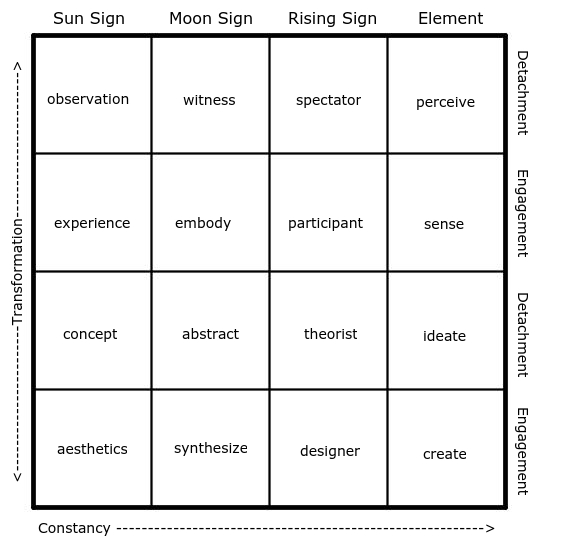
The terrain of aesthetic experience: a magic square for social practice

Social practice in an expanded field: against art historical noodling and for Sunday morning doodling

…But I remain interested in social practice to the degree that it remains social practice, rather than social practice *art*. So when we inquire into the aesthetics of participation for instance we don’t get bogged down in all the art historical noodling that paralyzes so many critics from the old school. It is important to emphasize that all kinds of “problems” are solved by recognizing that art [frieze/e-flux/triple canopy type art], is just a highly specialized and mostly pointless parlor game played with, and within, aesthetic experience. If we remain attuned to aesthetics and aesthetic experience (especially from an embodied, phenomenological point of view) or to “the arts” or “the art of” or “the artful” rather than to Art, we increase the chances of having the “dynamic, complex and difficult dialogues” *** seeks rather than the insular professional tiffs of the Art world.
fill in the blanks and move things around (part II) – a wildly partial map of social practice

a minimal equation: social poiesis + social praxis + social phronesis = social practice

This image is an expansive understanding of social practice, more expansive even than “social poiesis” which I have previously argued for:
“social poiesis” (despite its even more obscure quality) might be a better term. If we don’t limit ourselves to art, social poiesis (nee practice) could be more dynamic and encompass not only art actions and art environments, but also – urban planning, sports leagues, communes, be-ins, residencies, raves, state fairs, theme parks, cults, encounter groups, chautauquas, even nations…and would also apply to a much broader demographic of participants rather than artists and their audiences…
the interplay of tr(ust) a(nd) p(ower) – a trap map for social practice
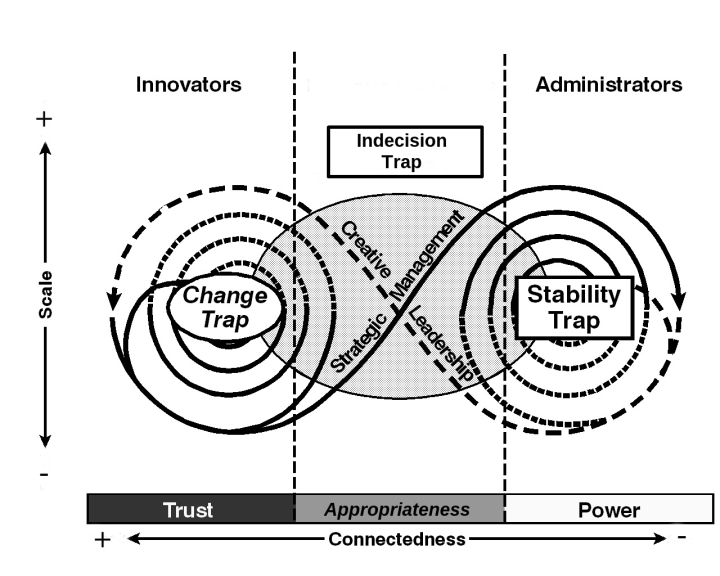

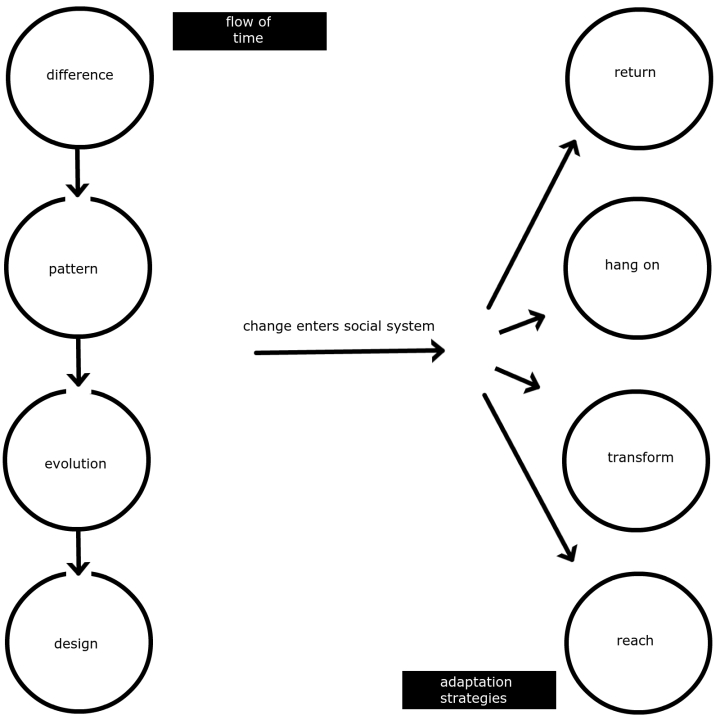
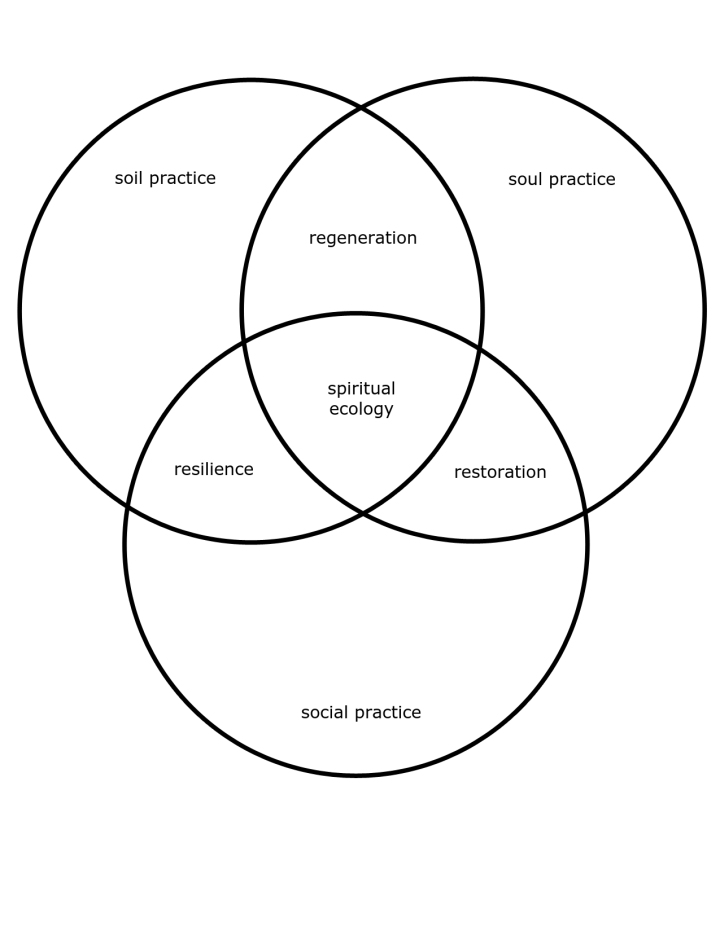



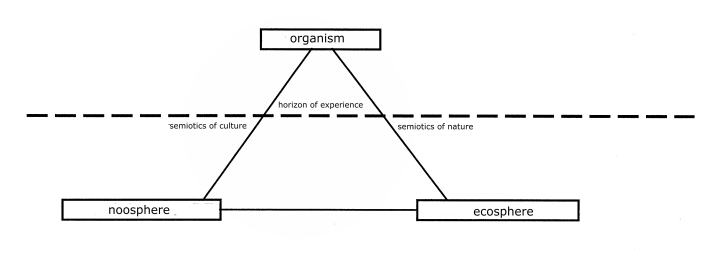





leave a comment